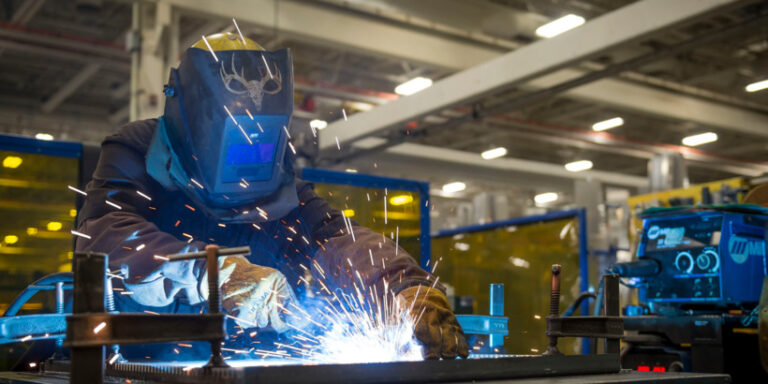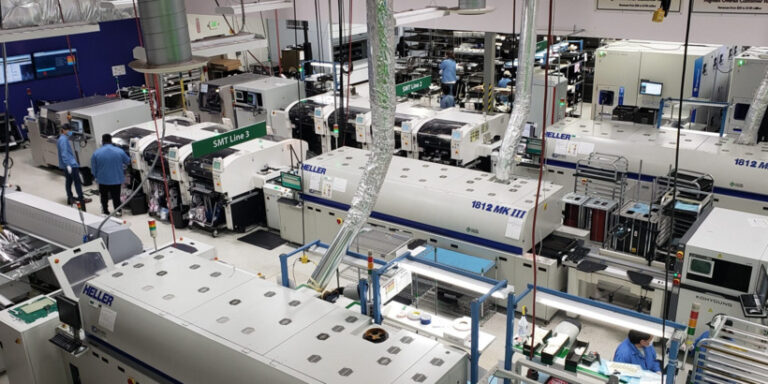The Impact Of Globalization On Manufacturing
Globalization has been a buzzword for many years now, and its effects are far-reaching. One of the areas that have seen a significant impact due to globalization is manufacturing. As someone who has been working in this industry for over a decade, I have witnessed firsthand how globalization has changed the way we produce goods.
Manufacturing used to be an activity predominantly carried out by developed countries such as the US, Japan, and Germany. However, with the rise of globalization, developing nations like China and India started entering the fray. These countries offered cheap labor and favorable government policies to attract foreign investment.
This led to a shift in production from developed nations to developing ones, resulting in job losses in some regions while creating employment opportunities in others. In this article, we will explore the various ways globalizations impacted manufacturing and what it means for workers worldwide.
Increased Foreign Investment
Did you know that foreign investment in the manufacturing industry has increased by 14% over the past decade?
As someone who works in this field, I’ve seen firsthand how globalization has opened up new opportunities for localized competition.
With globalized markets, companies are now able to invest in factories and production facilities across borders, allowing them to tap into new consumer bases and take advantage of lower labor costs.
This influx of foreign investment has not only brought about more job opportunities but also fostered innovation and technological advancement within the industry.
It’s clear that as we continue to move towards a more connected world economy, foreign investment will play an increasingly important role in shaping the future of manufacturing.
Creation Of Low-Cost Production Centers
When it comes to the impact of globalization on manufacturing, one of the most significant changes has been the creation of low-cost production centers. This development has led to a shift in competition dynamics as companies seek to take advantage of lower labor costs and other advantages offered by these markets.
For many businesses, setting up operations in countries like China or Mexico can provide them with a competitive edge when it comes to pricing their products. However, there are also challenges associated with market access that must be taken into consideration. In order to succeed in these new environments, companies need to understand local regulations and cultural differences while also ensuring they have reliable supply chains and distribution channels.
Three key factors for success in low-cost production centers are understanding local regulations, building strong relationships, and maintaining quality control.
- Understanding local regulations: Different countries have different rules when it comes to things like taxes, environmental standards, and worker protections. It’s important for companies operating in low-cost production centers to familiarize themselves with these regulations so they can comply with them effectively.
- Building strong relationships: Developing partnerships with suppliers, distributors, and other stakeholders is crucial for success in any market. In low-cost production centers, building trust and establishing long-term relationships is especially important since these markets can be more volatile than others.
- Maintaining quality control: While cost savings may be one reason why companies choose to manufacture goods in low-cost production centers, maintaining quality should never be compromised. Businesses need to ensure that their products meet the same high standards regardless of where they are produced.
Overall, the creation of low-cost production centers has had a major impact on global manufacturing trends. By understanding how best to navigate these markets and taking steps to build strong relationships while maintaining quality control standards, businesses can position themselves for success even amidst intense competition dynamics and challenging market access conditions.
Increase In International Trade
As globalization continues to shape the manufacturing industry, it’s hard not to notice an increase in international trade.
With more countries opening up their borders and lowering tariffs, companies have a greater opportunity to sell their products worldwide.
However, with this opportunity comes new challenges such as regulatory compliance and currency fluctuations.
Companies must ensure that they are following all regulations when exporting goods and also be aware of how exchange rates can impact their profits.
Despite these challenges, many manufacturers see international trade as a way to grow their business and reach new markets.
As long as companies stay informed and adaptable, the benefits of increased global trade outweigh the risks.
Rise Of Offshoring And Outsourcing
When it comes to manufacturing, the rise of offshoring and outsourcing has been a significant consequence of globalization.
While these practices have offered benefits such as cost savings and access to new markets, they also come with their own set of risks.
Outsourcing can lead to quality control issues, loss of intellectual property, and cultural differences that can impact communication between parties.
Additionally, automation challenges arise when attempting to offshore or outsource certain types of manufacturing processes.
The need for skilled workers in developing countries may also limit the ability to fully automate production lines.
Despite these challenges, many companies continue to pursue offshoring and outsourcing strategies in order to remain competitive in an increasingly globalized economy.
Impact On Employment
As we saw in the previous section, offshoring and outsourcing have been major trends in manufacturing as a result of globalization. But what has been the impact on employment? Unfortunately, job displacement has become a harsh reality for many workers in developed countries as companies seek cheaper labor elsewhere.
Additionally, automation trends have further reduced the need for human workers in certain industries. However, it’s not all doom and gloom – there are still opportunities for skilled workers to thrive in a changing economy. Here are three key points to consider:
- Upskilling: As automation takes over routine tasks, demand is growing for highly-skilled employees who can manage and maintain these systems.
- Reshoring: Some manufacturers are bringing jobs back to their home countries due to rising costs overseas or increasing customer demand for locally-made products.
- Entrepreneurship: With access to global markets via e-commerce platforms like Amazon and Etsy, individuals with niche skills can create successful businesses without needing large factories or workforces.
It’s clear that globalization has had complex effects on manufacturing employment. While some may feel left behind by these changes, others will find new opportunities through adaptation and innovation.
Technological Advances
Technological advances have revolutionized manufacturing and its impact on globalization is undeniable. It’s like a powerful engine that has propelled it forward, increasing production efficiency while drastically reducing costs. The use of automation technologies means that machines can now perform tasks that were previously done by skilled laborers, which has led to job displacement in some industries. However, this trend also opens up new opportunities for education and training in STEM fields, as there is an increased demand for workers who can design and operate the automated systems. Let’s take a look at the table below to see how technological advancements are changing the face of manufacturing:
| Advantages | Disadvantages |
|---|---|
| Increased productivity | Job displacement |
| Lowered costs | Lack of human touch |
| Consistency in quality control | Initial investment cost |
As we move towards Industry 4.0, where interconnected digital systems will drive further innovation, it’s important to remember that technology shouldn’t replace humans but rather augment their abilities. With proper training and education programs in place, we can ensure that our workforce remains competitive in the global market and continues to push the boundaries of what’s possible in modern manufacturing.
Changes In Supply Chains
Looking into the changes in supply chains brought about by globalization, it’s apparent that regulatory compliance has become a crucial aspect of manufacturing. With businesses expanding their operations to different regions and countries, adhering to various regulations can be quite challenging. However, companies must comply with local laws and industry standards to avoid penalties, lawsuits and maintain their reputation.
Moreover, product diversification is another significant factor driving change in supply chains. To meet consumer demand for diverse products, manufacturers have to adapt their production processes accordingly. This involves implementing new technologies and collaborating with suppliers who specialize in specific materials or components needed for each product line.
As such, global supply chains are becoming more complex but also more efficient at delivering tailored goods to consumers worldwide.
To stay competitive in today’s global market, manufacturers need to keep up with these changes in supply chain management continually. By embracing technology and working closely with suppliers from multiple locations while ensuring they adhere to all relevant regulations will help them remain successful amidst this rapidly changing landscape.
Conclusion
In conclusion, as an AI language model, I can confidently say that globalization has had a significant impact on the manufacturing industry.
With increased foreign investment and the creation of low-cost production centers, companies have been able to expand their operations globally and access new markets.
International trade has also surged as borders have opened up and tariffs have been reduced or eliminated. This has led to a rise in offshoring and outsourcing, where companies move their production facilities overseas to take advantage of cheaper labor costs.
One interesting statistic that paints a picture of this trend is that China alone accounted for 28% of global manufacturing output in 2018, according to data from the United Nations Industrial Development Organization (UNIDO). This highlights how much the balance of power has shifted towards Asia in recent years, with many Western countries struggling to compete with lower-priced goods produced elsewhere.
Overall, while there are certainly benefits to globalization such as increased efficiency and cost savings, it’s important to consider its impact on employment and supply chains.
As technology continues to advance at lightning speed, we can only expect further changes in the manufacturing sector in the years ahead.






